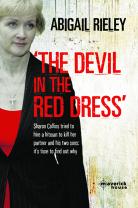I’ve been terrible about updating this blog this year. I finally started my PhD in January and between a full-time job and trying to narrow down what my thesis is going to be all about, there hasn’t really been much time to think, let alone write any remotely cogent prose.
They don’t tell you when you sign up for a PhD that the research proposal you are accepted on is not the end of the discussion when it comes to your thesis subject. I had blithely thought that the rather scattered idea I had pitched would be the broad base for my thesis. Um…no. After a couple of meetings with my supervisors, I’ve ended up refining my focus considerably, even changing tack quite considerably. At times I wondered how I had got to this point at alI, if there was such a distance between my initial research proposal and my finished research plan. You see, I still think like a writer – I see a research proposal as a pitch and in my mind, I had already completed the initial stages and was now ready to settle down to the research. But, as I keep discovering, academia is not the same as publishing. This is a good thing. The plan I now have for the thesis is so much stronger than the idea I had come up with over a few days in a panic at submitting an application for an actual doctorate. This research plan has an elegance and sophistication I’ve never managed to get into a synopsis and chapter plan for a publisher.
I probably shouldn’t admit that, but the academic process is vastly different. If I had been writing it as a book I would have worked on the synopsis and chapter plan (containing much the same information I would put into a research plan) alone, in a mild panic as I tried to crystallise an idea that was still not quite ready to be formed. Whether you’re writing a synopsis or a chapter plan the problem is the same. It’s something you write at a very early stage in research. You write it before you know what problems, what discoveries you will make along the road, you write it with a skeleton idea, what you think is going to work. What comes out the other end is invariably a different beast. Obviously, in both cases, the idea you’re pitching is a solid one as it’s one that you know has the legs to become a book or your subject but any idea at the beginning of a project is a shadow of what it will become. As a writer, you go through the uncertainty and doubt alone. You must grapple with your idea until it is ready to present to the publisher – who will just throw it back at you if it’s not ready to go. In academia it’s different. It’s a far more collaborative, supportive process. That’s not to say it’s not still as frustrating as hell but I’m almost out the other side now so I can be benevolent. I like the fact that academic ideas are allowed to mature a little bit slower.
I knew that taking on this PhD part time while I hold down a full-time job would be a balancing act and it is, but it is also difficult to get to know people. It’s difficult not to get isolated but I gather that’s the case however you do your doctorate and I’m reminded of the way writers seized on Twitter in the early days as a way of building a network of “co-workers” so they didn’t end up talking to their characters – a problem that can be an occupational hazard whether you write fiction or non-fiction. I’m taking every opportunity I can to meet fellow PhD students because there are certain things you just need to talk with peers about. Working alone you lose track of what is a neurotic tic and what is normal behaviour – for a bit of perspective you need a meeting of your peers. But to meet them takes a lot of planning. I’m extraordinarily lucky that I have a job that allows me the flexibility to work from college on days when I have meetings or seminars. To be honest, I don’t know how I’d manage this without that flexibility. I know some people do manage to do a PhD completely unrelated to their demanding day job but this is as full throttle as I can manage.
So getting back to the purpose of this post. I’ve been pondering what on earth I’m going to do with this blog now I’ve an academic profile to build. I’ve built so many profiles on here in the past. But it occurs to me that actually, when you boil it all down, I’ve always stuck to the same thing. I have always written about my work, my research and the issues that I feel passionate about. Since my thesis looks at 19th-century court reporters in Ireland it’s unlikely regular readers will notice much difference. I’ll still be talking about journalism, writing and murder, but I will now be discussing matters that took place up to over a century ago. All I can do is share my experience. I’ll write about some of the cases I’m exploring and the way the papers covered them, I’ll also discuss wider issues like violence against women and social issues.
Plus ça change, plus c’est la même chose!













